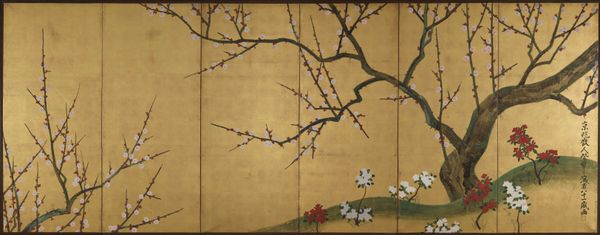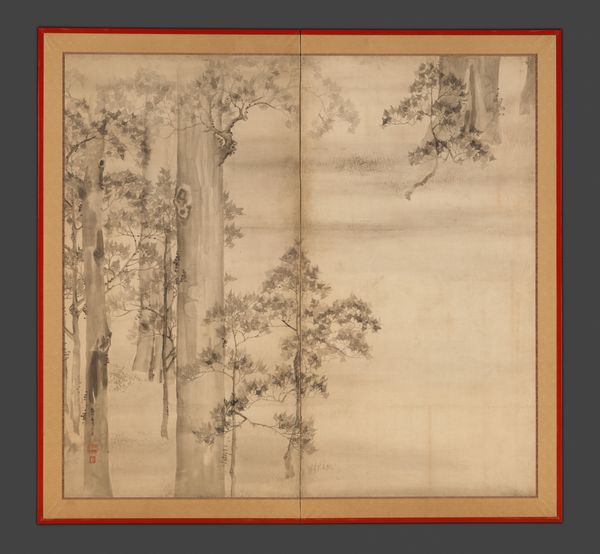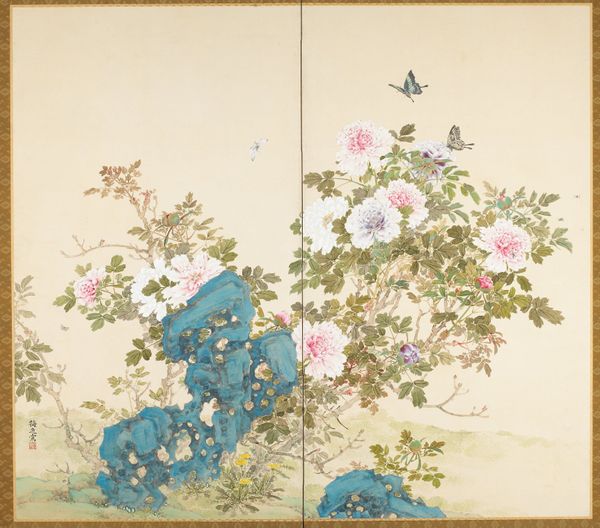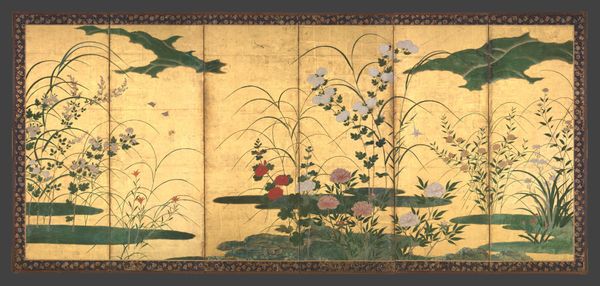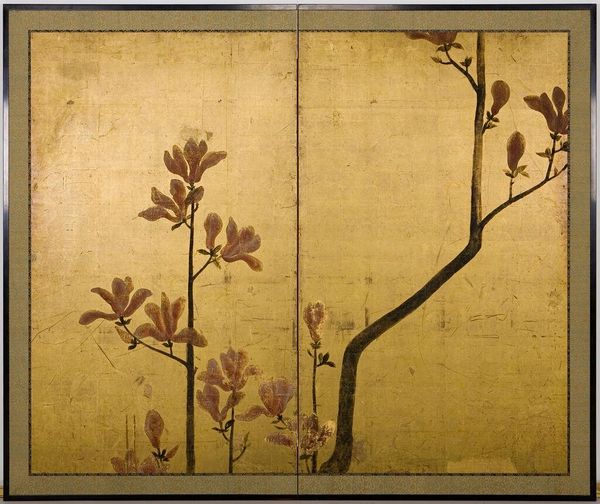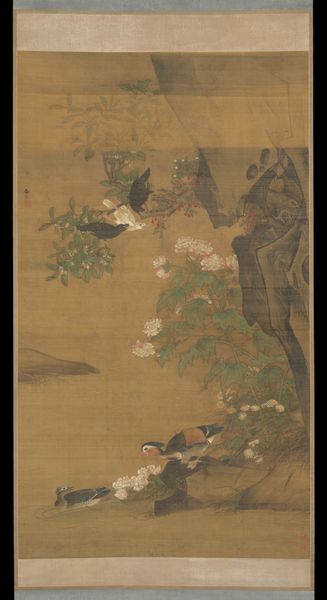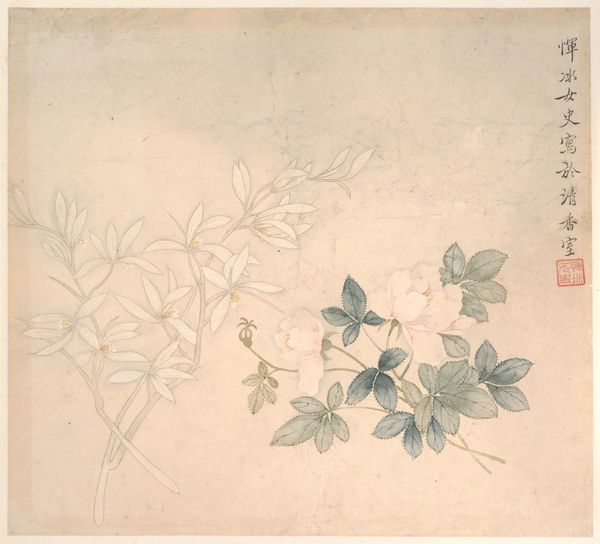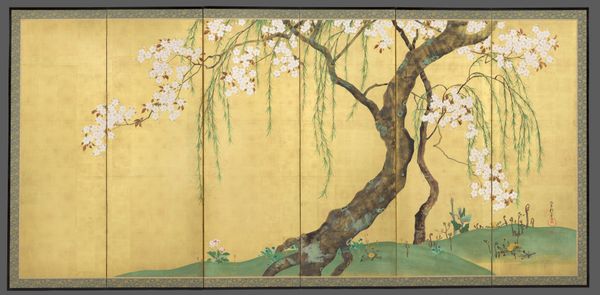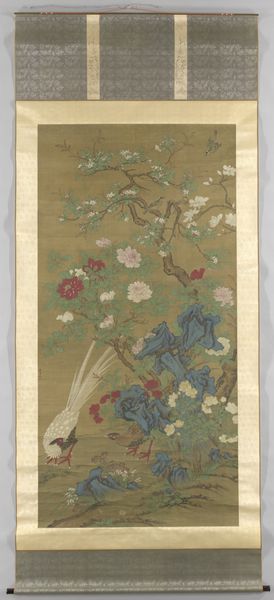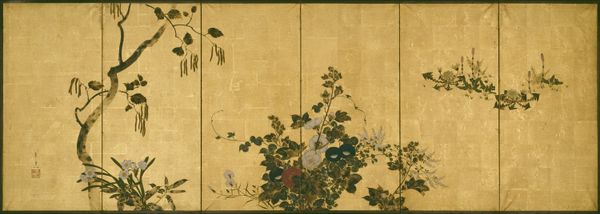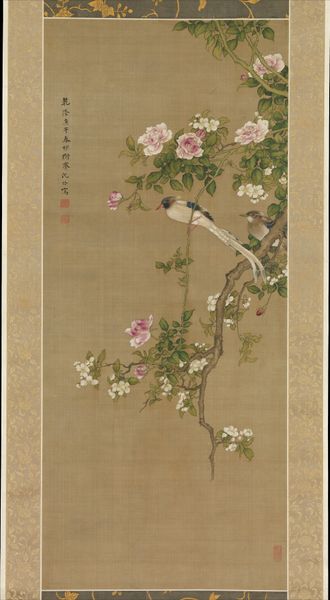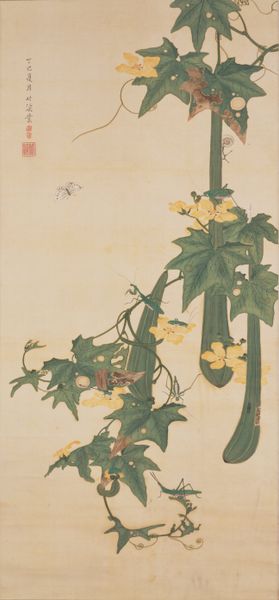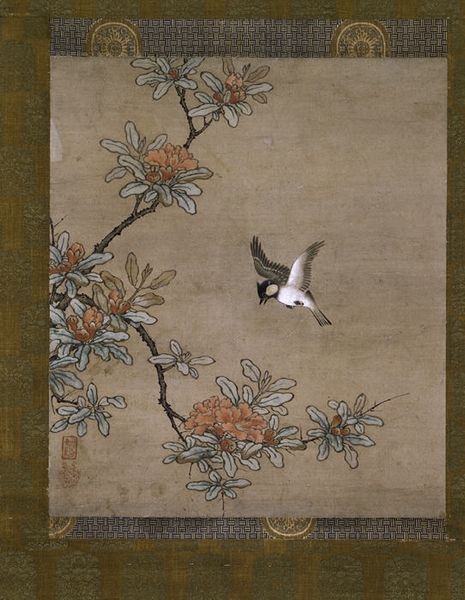
painting, watercolor
#
painting
#
asian-art
#
landscape
#
ukiyo-e
#
japan
#
watercolor
#
orientalism
Dimensions: Image: 56 9/16 × 56 5/8 in. (143.7 × 143.8 cm) Overall: 64 1/8 in. × 64 in. (162.9 × 162.6 cm)
Copyright: Public Domain
Curator: Sakai Hōitsu’s "Persimmon Tree," dating back to 1816, offers us a serene, almost contemplative glimpse into Japanese art from the Edo period, now held at the Metropolitan Museum of Art. What strikes you about it initially? Editor: The composition immediately evokes a feeling of elegant solitude. The simplicity of the scene, a lone persimmon tree, is incredibly calming. The bright pops of orange fruit really catch the eye against the muted backdrop. There’s almost a sense of melancholic beauty to it. Curator: Absolutely. Hōitsu was a master of Rimpa school aesthetics, known for its decorative and naturalistic approach. He revived many traditional motifs. One interesting angle here involves his noble status; such aesthetic pursuits were largely sustained through powerful cultural institutions of the time. The Tokugawa shogunate played a significant role in the cultural life. Editor: It also speaks to our current socio-political climate, really. Think about the role of art and nature in urban spaces. A simple image of a tree and fruit can inspire reflection about the rapid changes in our landscapes. Hōitsu's careful brushwork allows for such appreciation and almost suggests a yearning for nature amidst encroaching development. Curator: I agree. The way he captures the light playing on the leaves is masterful. This sort of study goes beyond just aesthetic appeal. In the historical context, this focus on natural motifs was part of the larger cultural discourse of finding harmony and balance. Editor: Right, there’s also an environmental dimension to this piece that feels incredibly timely. Persimmons are native to East Asia, after all, and have historically sustained various communities, particularly during harsher winters. This artwork silently emphasizes our connection to nature in a tangible, meaningful way. Curator: That said, how artworks like these are displayed and interpreted today also tells a story. Museum settings transform them, shifting their role in our contemporary visual culture. How do you see it influencing dialogues? Editor: Well, the fact that it's prominently displayed here invites us to re-evaluate and connect with the artistic vision of Sakai Hōitsu and how it could translate into the social and environmental questions of the present moment. Ultimately, art exists in both the past and the present, continually shaping dialogues. Curator: An enduring visual testament that invites discourse. A welcome idea to take with you as you leave this space.
Comments
No comments
Be the first to comment and join the conversation on the ultimate creative platform.
